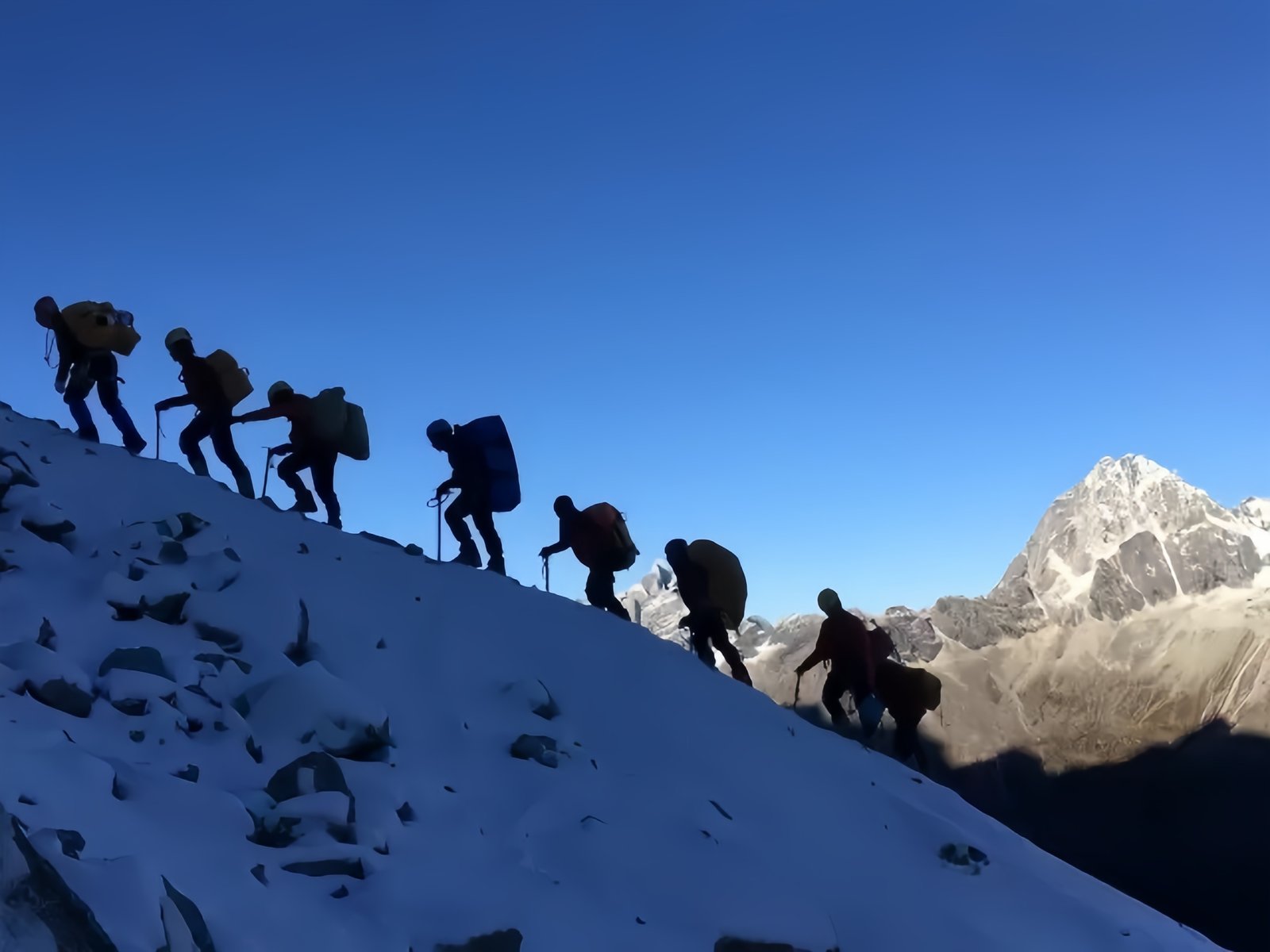The Role of Oxygen in High-Altitude Climbing
In high-altitude climbing, the thin air and resulting lack of oxygen lead to a significant decline in various bodily functions, posing one of the greatest risks to climbers. Therefore, using oxygen during climbs serves two main purposes:
- Assistance: During normal climbs, oxygen reduces the symptoms of altitude sickness, improves climbing efficiency, and lowers the risk of severe altitude sickness. This is generally used for peaks above 8000 meters.
- Treatment: In cases of severe altitude sickness, immediate use of oxygen and rapid descent are crucial for saving lives. When a climber is injured, using oxygen helps enhance overall bodily functions, increase resistance, and speed up recovery. Hence, even when not climbing 8000-meter peaks, climbing teams preparing for a summit often carry oxygen for emergency use.
Hypoxia and Altitude Adaptation
As altitude increases, the air becomes thinner, and the severity of hypoxia escalates. Medically, altitudes above 3500 meters are considered high altitude. Climbers exhibit different reactions to high altitudes, which can be categorized into three types:
- Majority of Climbers: Most climbers have one or two altitude thresholds. Once they acclimatize to these thresholds, the impact of hypoxia becomes relatively stable, although it still exists. Each climber’s altitude threshold may vary.
- Non-Adaptors: Some individuals cannot adapt to high altitude at all and must descend immediately, avoiding high altitudes permanently.
- Gradual Adaptors: A few individuals need to acclimatize at each increase in altitude (500-700 meters). For high-altitude climbing, this is extremely challenging and dangerous.
The variability in individual responses to hypoxia necessitates that climbers personally experience different altitudes to understand their conditions at 5000, 6000, 7000, and 8000 meters. Simulating these conditions at lower altitudes is difficult—the only method being low-pressure oxygen chambers, but they cannot replicate the prolonged living and activity conditions of high altitudes.
Climbing 8000-meter peaks without supplemental oxygen is a pursuit for elite climbers. Only a few independent climbers and high-altitude guides possess this ability, and it is not recommended for general climbing clients.
Dangers of Severe Hypoxia
Severe hypoxia can cause the following hazards:
- Severe High-Altitude Cerebral Edema: Can be fatal within 24 hours of onset.
- Severe High-Altitude Pulmonary Edema: Can be fatal within 48 hours of onset.
- Impaired Awareness, Judgment, and Physical Ability: This can lead to other dangers during climbing, such as physical exhaustion, inability to move, severe hypothermia, accidents due to poor judgment, falls, and getting lost.
- Irreversible Damage to the Brain and Central Nervous System: Long-term exposure to severe hypoxia can cause irreversible damage.
- Severe Frostbite: Combined with low-temperature environments, severe frostbite can occur.
Why Oxygen Is Not a Panacea
While using oxygen in high-altitude climbing can greatly reduce altitude sickness and enhance performance, over-reliance on oxygen can also pose significant risks, especially on peaks above 8000 meters. Using oxygen at high altitudes is akin to lowering the user’s altitude by 2000 meters or more. Climbers who overly depend on oxygen have poorer altitude acclimatization. The potential dangers of early and heavy oxygen use include running out of oxygen prematurely, equipment failure, incorrect usage, unexpected oxygen loss, and insufficient personnel to carry oxygen supplies. These situations are common and, at altitudes above 8000 meters, the sudden transition from using oxygen to extreme hypoxia can be fatal, as it equates to a sudden altitude gain of 2000 meters.
The allure and danger of climbing lie in the details.
FAQs
What are the benefits of using oxygen in high-altitude climbing? Oxygen reduces symptoms of altitude sickness, improves efficiency, and lowers the risk of severe altitude sickness, especially above 8000 meters.
How does hypoxia affect climbers at high altitudes? Hypoxia can cause severe cerebral and pulmonary edema, impaired judgment, physical exhaustion, and irreversible brain damage, among other hazards.
Can all climbers adapt to high altitudes? No, responses vary. Some climbers adapt to one or two altitude thresholds, some cannot adapt at all, and others need gradual acclimatization at each increase in altitude.
Why is it dangerous to rely heavily on supplemental oxygen? Over-reliance can lead to poor altitude acclimatization and risks such as running out of oxygen, equipment failure, and sudden exposure to extreme hypoxia if oxygen supply is lost.
What should climbers do if they experience severe altitude sickness? Immediate use of oxygen and a rapid descent are crucial for treating severe altitude sickness and preventing fatal outcomes.
Is it advisable to climb 8000-meter peaks without supplemental oxygen? Climbing without supplemental oxygen is generally reserved for elite climbers and high-altitude guides. It is not recommended for general climbing clients due to the significant risks involved.



